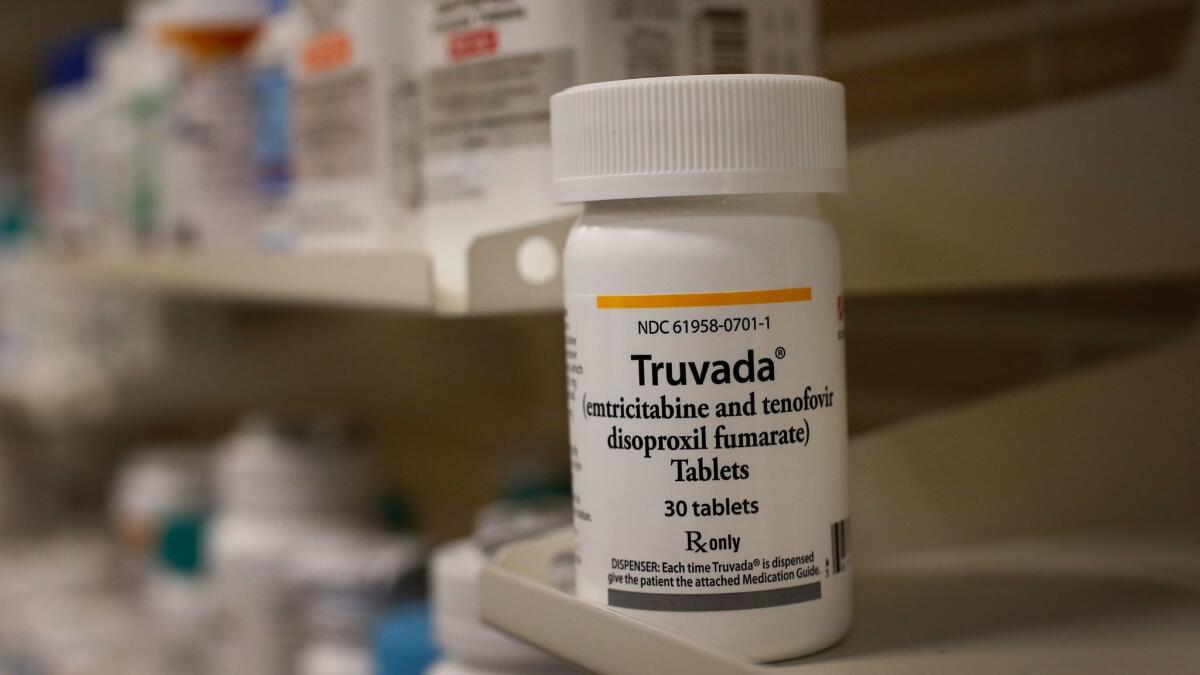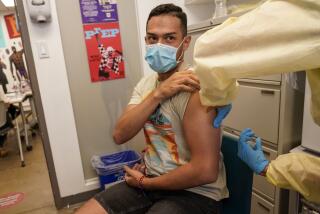L.A. County officials launch effort to curb HIV

- Share via
Los Angeles County public health officials on Friday announced an effort aimed at reducing the annual number of HIV infections by more than two-thirds and bringing an end to the virus that causes AIDS.
More than 60,000 people in the county live with HIV, the second-largest such population in the nation. Around 1,850 new cases are diagnosed here each year, the majority among LGBTQ residents, Latinos and African Americans.
In outlining the Los Angeles County HIV/AIDS Strategy on World AIDS Day, officials set three goals: Reduce annual HIV infections to 500 by 2022, increase the proportion of those living with HIV who are diagnosed from 86% to at least 90% by 2020, and increase the proportion of that population who are virally suppressed from 60% to 90%.
The way to accomplish that, they said, was by encouraging community health centers and private medical providers to focus on preventive care.
“This is the time to center people of color, transgender people and young gay men; be unapologetically sex positive, and catch up to the science of HIV prevention,” said Grissel Granados, community co-chair of the strategy. “We have an opportunity to make a significant impact on the HIV epidemic in Los Angeles by being intentionally bold.”
Officials have divided the county into 26 health districts and gathered detailed information about the HIV infection rate in each.
”Given the vast size of the county, breaking it down into districts makes it more manageable and helps folks plan how to better respond to these HIV goals,” said Mario Perez, director for Public Health’s division of HIV and STD programs.
Perez estimated that the county will need $69 million over the next five years to meet its HIV testing goals. It currently has at least $35 million committed to that effort.
According to the Department of Public Health, the timing of the initiative was driven by medical breakthroughs in HIV prevention in recent years, as well as passage of the Affordable Care Act — which allowed more residents to access healthcare.
Key was the development of a pill that, taken daily, can greatly reduce the chance of HIV infection among high-risk populations.
About 6,465 people in L.A. County currently take the pill — known as pre-exposure prophylaxis, or PrEP. In order to get that number to their goal of 70,000, public health officials have recommended increasing state funding for the California PrEP Assistance Program and allocating more money for outreach and education.
Follow me on Twitter @melissaetehad
More to Read
Sign up for Essential California
The most important California stories and recommendations in your inbox every morning.
You may occasionally receive promotional content from the Los Angeles Times.











